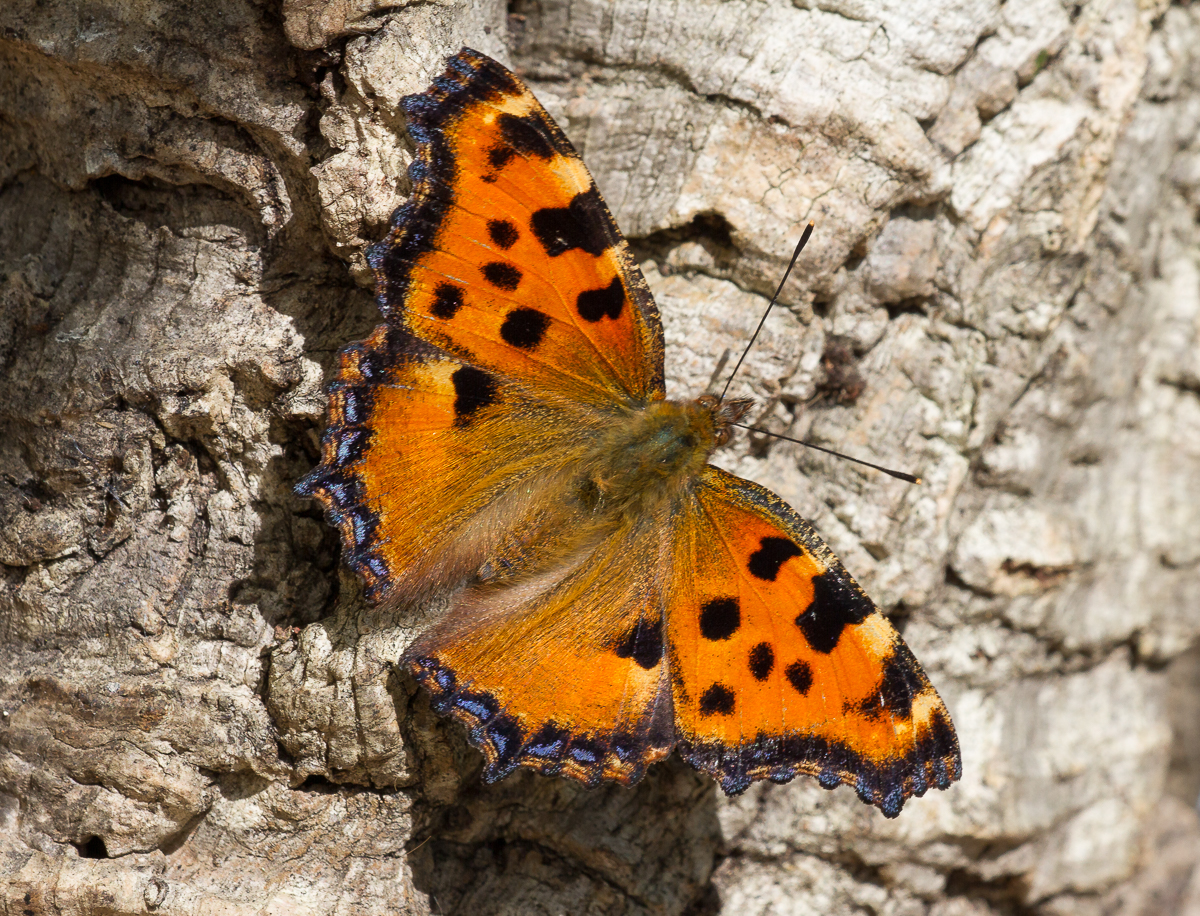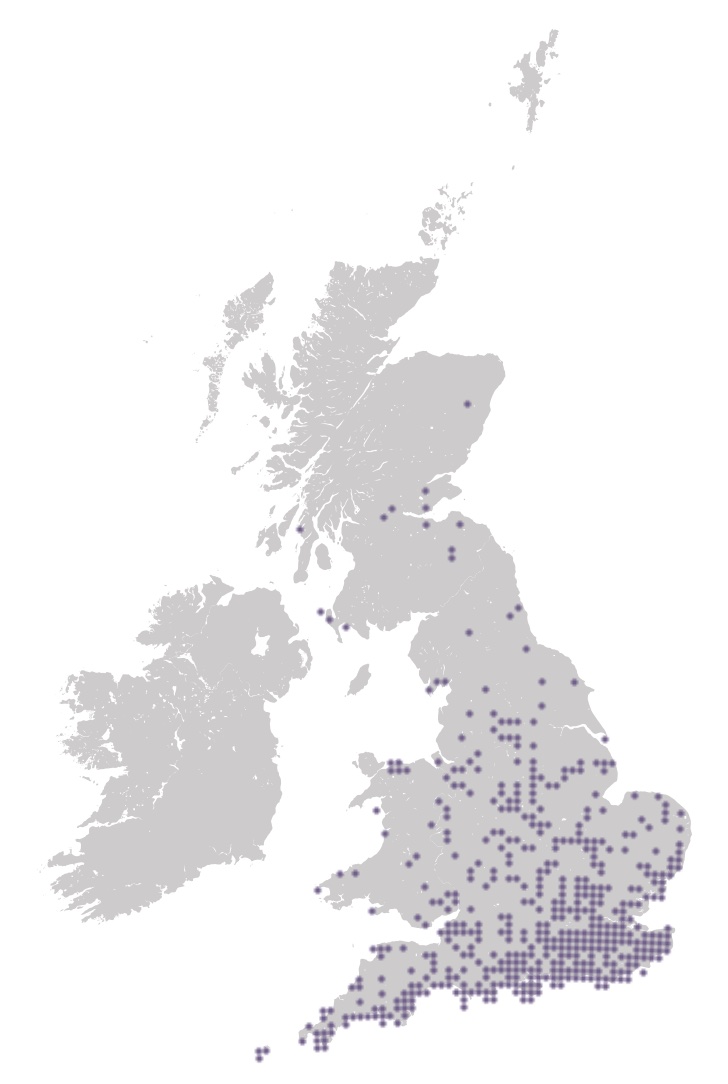
Photo © Peter Eeles
In Victorian times the Large Tortoiseshell was considered widespread and common in woodland in southern England. However, this beautiful insect has since suffered a severe decline and there have been less than 150 records since 1951. This butterfly, whose numbers were always known to fluctuate, is generally considered to be extinct in the British Isles, with any sightings considered to be migrants from the continent or accidental or deliberate releases of captive-bred stock. Several causes of its decline have been suggested - including climate change, parasitism, and the effect of Dutch Elm disease on one of its primary foodplants. The hope, of course, is that this butterfly is able to once again colonise our islands. Although previously found in many parts of England, Wales and Scotland, the greatest concentrations were in the midlands, south and east of England. This species has not been recorded from Ireland. Recent sightings have come from the south coast, in particular from South Devon, South Hampshire, the Isle of Wight and West Sussex.
This butterfly hibernates shortly after emerging from the pupa, finding a hibernation site in log piles or outbuildings. On emerging from hibernation in the spring, the butterfly feeds from Sallow flowers and sap runs and the adults mate soon after emerging. This powerful-flyer is often difficult to see when not feeding, as it can be difficult to approach, taking off at high speed at the least disturbance.

This butterfly is found primarily in woodland, especially those containing sallows whose flowers provide a primary nectar source for the adults in the spring.
Description to be completed.
